Yoga Sadhana Class 7 Notes Physical Education Unit 6 Chapter 2 Free PDF
| Table of contents |

|
| Introduction to Yoga Sadhana |

|
| General Guidelines for Practicing Yoga |

|
| Sūkshma Vyāyāma (Subtle Exercises) |

|
| Śithalīkarana Vyāyāma (Loosening Exercises) |

|
| Sūrya Namaskāra (Sun Salutation) |

|
Introduction to Yoga Sadhana
Yoga Sadhana refers to regular practice of various yoga postures (Āsanas), breathing techniques (Prānāyāma), and other activities aimed at physical and mental well-being.
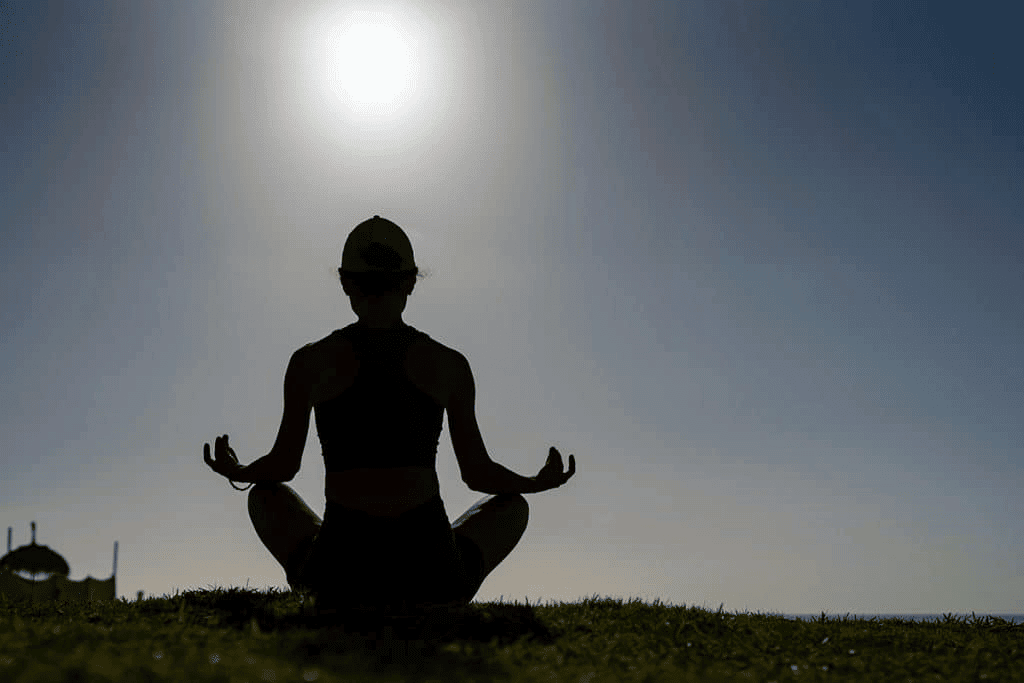 Yoga Sadhana
Yoga Sadhana
- The chapter introduces practices such as Āsanas, Prānāyāma, Pratyāhāra (control over senses), Dhārana (concentration), and Dhyāna (meditation).
- Regular practice makes the body stronger, more focused, flexible, and calm, and helps maintain balance in life.
General Guidelines for Practicing Yoga
- Breathe normally: Always breathe naturally and gently through the nose without forcing deep breaths.
- Stay aware: Pay attention to your breath, muscle stretch, and relaxation.
- Stay focused: Focus on your posture and follow instructions carefully.
- Rest if unwell: If you feel sick or uncomfortable (e.g., cold, headache), stop and rest. Ask the teacher for guidance if necessary.
Guidelines for Practicing Āsanas
- Warm-up first: Begin with exercises like Sūksma Vyāyāma to prepare your body and reduce the risk of injury.
- Practice on an empty stomach: The best time to practice yoga is in the morning, or wait 2-3 hours after eating if practicing later in the day.
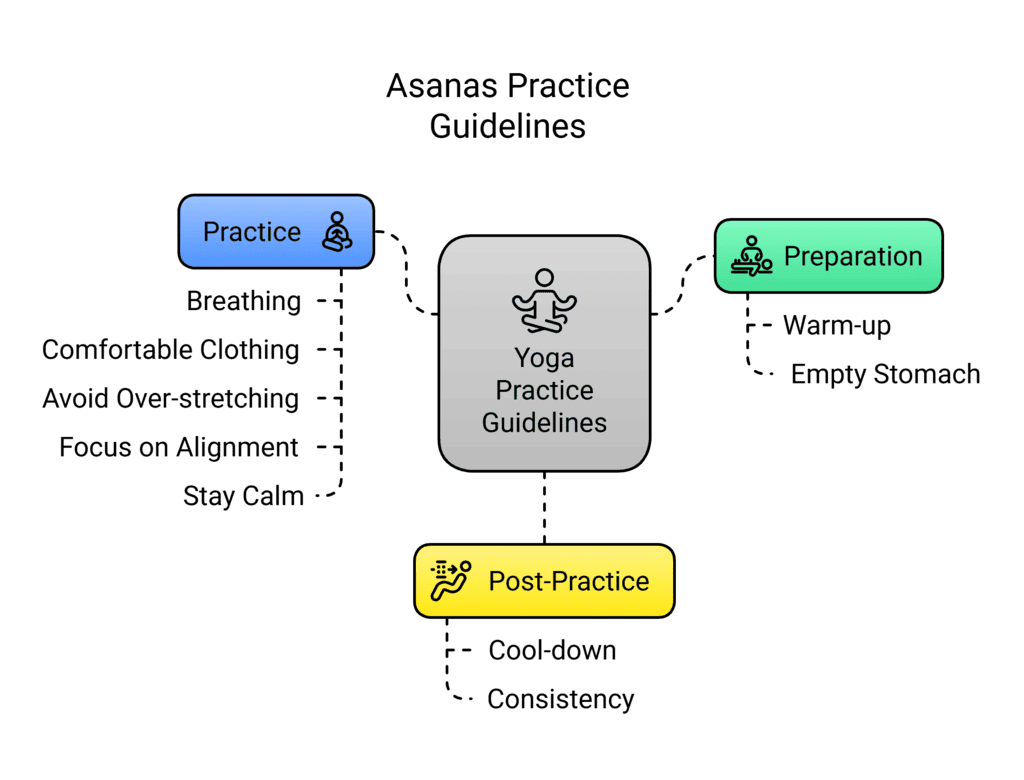
- Breathing: Breathe naturally, focusing on slow and deep breaths during each practice.
- Comfortable clothing: Choose loose, comfortable clothes for yoga and practice without shoes and socks.
- Avoid over-stretching: If a posture feels painful, gently ease out of it. Do not push yourself too hard.
- Focus on alignment: Ensure proper alignment for maximum benefits from the poses.
- Stay calm: Avoid talking during practice and focus on the physical sensations of each posture.
- Cool-down: After completing Āsanas, relax in Shavāsana or other relaxing postures.
- Consistency is key: Regular practice is more beneficial than occasional practice.
Guidelines for Practicing Prānāyāma
- Breathe naturally: Always breathe through the nose, keeping the practice smooth and easy.
- Sit comfortably: Sit with your back straight and hands resting on your knees.
- Start slowly: Begin with short durations and gradually increase the time spent on Prānāyāma.
- Check with your teacher: If you have respiratory conditions (e.g., asthma) or feel unwell, consult your teacher before practicing.
Sūkshma Vyāyāma (Subtle Exercises)
Sūkshma Vyāyāma is a series of gentle exercises designed to:
- Loosen joints
- Release tension
- Improve flexibility and strength
These exercises can be performed while sitting or standing and are beneficial for beginners or those with limited mobility.
Practices for Sūkshma Vyāyāma:

- Strengthening the fingers (Aṅgulī Śakti Vikāsaka)
- Strengthening the wrist (Maṇi Bandha Śakti Vikāsaka)
- Wrist joint rotation (Maṇi Bandha chakra)
- Strengthening the elbows (Kehuni Śakti Vikāsaka)
- Strengthening the shoulder joint (Skandha Chakra)
These exercises should be performed in sync with your breath to enhance the flow of vital energy (Prāṇa) and improve coordination and self-awareness.
Śithalīkarana Vyāyāma (Loosening Exercises)
Śithalīkarana Vyāyāma consists of loosening exercises to:
- Prepare the body for intense yoga practices
- Improve spinal flexibility and joint mobility
- Enhance muscle relaxation and circulation
These exercises are typically performed at the beginning of a yoga session to prepare large muscle groups and the spine for Āsanas.
Key Practices:
- Forward, backward, and sideways bending: Improves mobility and flexibility of the spine.
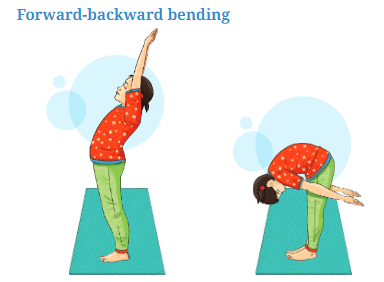
- Spinal twists: Gentle twists to relax and stretch the spine.
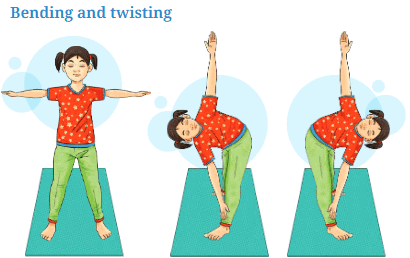
Sūrya Namaskāra (Sun Salutation)
Sūrya Namaskāra is a series of 12 yoga poses performed in a sequence that combines Āsanas, Prānāyāma, and mantras. It’s an excellent way to start the day with positivity and gratitude to the Sun.
Benefits of Sūrya Namaskāra:
- Strengthens muscles and improves flexibility
- Stimulates digestion and metabolism
- Engages multiple muscle groups (arms, legs, core, back)
- Boosts endurance and stamina
- Supports the transition from childhood to adolescence by balancing hormones
- Reduces stress, anxiety, and enhances mental clarity
- Improves mood, self-esteem, and academic performance
Steps of Sūrya Namaskāra:
Pranamāsana (Prayer Pose)

Begin with the Namaskāra mudra (hands in a prayer position).
Chant the prayer, asking for the Sun's energy and truth.
Hasta Utthanāsana (Raised Hands Pose)
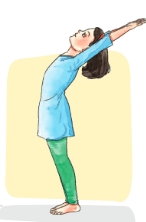
While inhaling, raise both hands above the head and bend backward.
Feel the stretch from the navel to the head.
Padahastāsana (Standing Forward Bend)
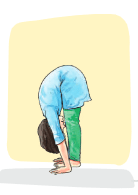
While exhaling, bend forward, bringing your forehead to your knees.
Ashwa Sanchālanāsana (Equestrian Pose)
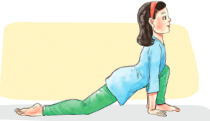
While inhaling, stretch the right leg back, keeping the left foot perpendicular to the ground.
Look up and maintain the alignment.
Dandāsana (Plank Pose)
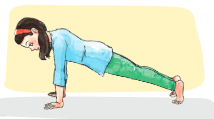
Take the right leg back and bring the body into a straight line.
Ashtāṅga Namaskara (Eight-Limbed Pose)
Lower your body so that eight parts touch the ground (forehead, chest, palms, knees, and toes).
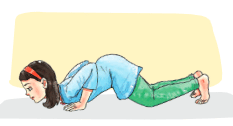
Bhujangāsana (Cobra Pose)
While inhaling, lift the chest and head, arching the spine.
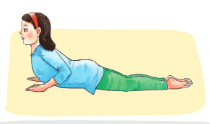
Parvatāsana (Mountain Pose)
While exhaling, lift the waist and bring the head towards the floor, keeping palms and feet flat.
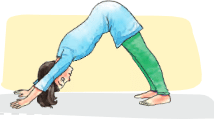
Ashwasanchālanāsana (Equestrian Pose – Step 2)
Bring the right leg forward between the palms and repeat the posture on the left side.
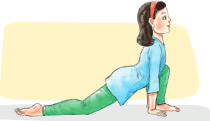
Padahastāsana (Standing Forward Bend – Step 2)
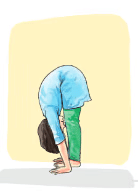
Exhale and return to the forward bend position.
Hasta Utthanāsana (Raised Hands Pose – Step 2)
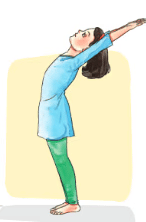
Inhale and return to the raised hands position.
Pranamāsana (Final Prayer Pose)
Slowly return to the prayer pose.

Conclusion
- Yoga Sadhana involves more than just physical postures—it’s a journey of self-awareness, focus, and improvement.
- By practicing Āsanas, Prānāyāma, and other techniques regularly, students can develop a strong, flexible body and a calm, focused mind.
- Consistent practice is key to experiencing the full benefits of yoga.
FAQs on Yoga Sadhana Class 7 Notes Physical Education Unit 6 Chapter 2 Free PDF
| 1. What are the general guidelines for practicing yoga? |  |
| 2. How should I approach practicing Āsanas? |  |
| 3. What is Prānāyāma and how can I practice it effectively? |  |
| 4. What are Sūkshma Vyāyāma and its benefits? |  |
| 5. How do I perform Sūrya Namaskāra correctly? |  |




















